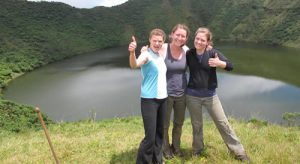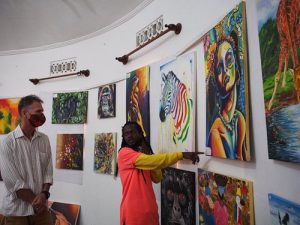If you are planning a gorilla trekking safari, one of the top questions travelers ask is: How many gorilla families are in Volcanoes National Park? Understanding the number of gorilla families, their names, behavior, and level of difficulty helps plan the perfect safari experience. Volcanoes National Park in Rwanda has some of the world’s most famous mountain gorilla families, each uniquely special with silverbacks, mothers, babies, juveniles, and playful infants. This guide explains how many gorilla families are in Volcanoes National Park, where they live, how to trek them, and what makes each one unique for travelers in 2025 and beyond.
So, How Many Gorilla Families Are in Volcanoes National Park?
Today, Rwanda has 12 fully habituated gorilla families in Volcanoes National Park that visitors are allowed to trek. These families are monitored and protected daily by rangers and conservation teams. Because of Rwanda’s strong conservation efforts, the number of gorilla families has grown over the years, making Rwanda one of the best gorilla trekking destinations in Africa.
This means only 96 permits are available per day, since only 8 visitors are allowed per gorilla family, ensuring limited human impact and maximum conservation.
List of All Habituated Gorilla Families in Volcanoes National Park
Here are the current gorilla families you can trek in Rwanda:
-
Susa Family
-
Kwitonda Family
-
Amahoro Family
-
Sabyinyo Family
-
Agashya / Group 13 Family
-
Hirwa Family
-
Umubano Family
-
Ugenda Family
-
Bwenge Family
-
Muhoza Family
-
Isabukuru Family
-
Karisimbi Family
These 12 groups are the answer to the question How many gorilla families are in Volcanoes National Park?—and each has a fascinating history, unique character, and different trekking difficulty.
Why Are There 12 Gorilla Families in Volcanoes National Park?
Rwanda manages gorilla trekking carefully.
-
Each gorilla family must be habituated (comfortable around humans)
-
Families are protected, monitored, and studied
-
Numbers grow naturally through births and new silverbacks
-
No two trekking groups visit the same family at the same time
This allows sustainable tourism, better conservation results, and a high-quality trekking experience.
Detailed Breakdown of Each Gorilla Family
1. Susa Family (Susa A) – The Most Famous Family
The Susa family is one of Rwanda’s largest and most historic groups, made famous by Dian Fossey. It lives in the upper slopes of Karisimbi Volcano. Trekking this family can be challenging because they move high into the mountains, but the experience is unforgettable. They are known for twins and large silverbacks.
2. Kwitonda Family – Led by Migrating Silverbacks
Originally from the Democratic Republic of Congo, the Kwitonda family settled in Rwanda permanently. They move far into the forest, giving trekkers a full adventure experience. Named after “Kwitonda,” a gentle silverback whose leadership made the group famous.
3. Amahoro Family – The Peaceful Group
“Amahoro” means peace in Kinyarwanda. This family is known for calm behavior and gentle interactions. Trekking this group is moderate and accessible. They are often recommended for first-time trekkers who want a relaxed and emotional experience.
4. Sabyinyo Family – Perfect for Easier Trekking
If you are asking How many gorilla families are in Volcanoes National Park and which one is easiest to trek, the answer is often the Sabyinyo family. They usually stay near the lower slopes and farmland. They are known for massive silverbacks like Guhonda, one of the largest gorillas in Rwanda.
5. Agashya (Group 13) – The Family That Loves to Move
Agashya means “something special.” This family has grown over the years as the dominant silverback continually attracts new members. They roam widely, so trekking difficulty varies, but encounters are always dramatic and exciting.
6. Hirwa Family – Once Migrated to Uganda
The Hirwa family is one of Rwanda’s most interesting groups. They once crossed to Uganda’s Mgahinga National Park and later returned. They are known for playful juveniles and adorable infants. Trekking them requires flexibility because they move between forest zones.
7. Umubano Family – The Neighbors
This family broke away from Amahoro after the silverback Charles challenged the dominant male. Today, it is a peaceful and well-organized group. Trekking difficulty is moderate.
8. Ugenda Family – The Wanderers
“Ugenda” means mobile. As the name suggests, this family rarely stays in one area. Trekkers must follow their trail deeper in the forest, which makes the trek exciting for adventure lovers.
9. Bwenge Family – Hollywood Famous
The Bwenge family featured in the film “Gorillas in the Mist.” This group lives on the slopes of Visoke volcano. Bwenge means “wisdom,” and the family is known for many infants and a protective silverback.
10. Muhoza Family – Growing Fast
One of the newest and fastest-growing gorilla families. They are close to the park boundary and often easy to trek. Families with children enjoy this trek.
11. Isabukuru Family – Birthday Family
“Isabukuru” means birthday in Kinyarwanda. This family is calm, stable, and mostly found in middle forests. Their infants attract photographers who want beautiful gorilla portraits.
12. Karisimbi Family (Susa B) – For Experienced Trekkers
This is a branch of the original Susa A family. Located higher on Mount Karisimbi, this trek is the longest and toughest. If you want adventure, long hiking, and remote forest exploration, this is the group to request.
Why Mountain Gorilla Families Matter, How Many Gorilla Families Are in Volcanoes National Park
Understanding how many gorilla families are in Volcanoes National Park helps travelers know:
-
Permit availability
-
Trekking distances
-
Difficulty levels
-
Behavior and gorilla dynamics
-
Conservation success
More gorilla families mean more births, more genetic diversity, and successful protection programs in Rwanda.
How Rangers Assign Gorilla Families, How Many Gorilla Families Are in Volcanoes National Park
When you arrive at Kinigi Headquarters for briefing, rangers assign families based on:
-
Age
-
Fitness level
-
Trekking experience
-
Special requests
-
Weather and trail conditions
If you prefer an easier trek, you may get Sabyinyo, Agashya, or Muhoza. If you want adventure, you can request Kwitonda or Karisimbi.
How Many Gorilla Families Are in Volcanoes National Park for 2025–2027?
The official answer remains 12 habituated gorilla families, but numbers sometimes change due to births, silverback takeovers, or new family splits. Rwanda’s conservation program constantly monitors and protects each family to ensure long-term survival.
Why Rwanda Is the Best Place to Trek Mountain Gorillas, How Many Gorilla Families Are in Volcanoes National Park
-
Safest and cleanest country in Africa
-
Easy 2.5-hour drive from Kigali to the park
-
Well-trained rangers and trackers
-
Luxury and midrange lodges near the starting point
-
High chance of seeing gorillas—over 98% success
No long internal flights, no complicated transfers, and no risky wilderness routes.
Tips for Choosing the Right Gorilla Family, How Many Gorilla Families Are in Volcanoes National Park
-
Seniors or beginners → Sabyinyo / Amahoro / Muhoza
-
Photographers → Bwenge / Isabukuru
-
Adventurers → Karisimbi / Kwitonda
-
Travelers wanting a famous group → Susa A / Agashya / Bwenge
Final Answer: How Many Gorilla Families Are in Volcanoes National Park?
There are 12 habituated mountain gorilla families in Volcanoes National Park, each available for trekking by visitors. This number makes Rwanda one of the world’s top destinations for mountain gorilla tourism, conservation, and wildlife photography.
So if you’re planning a safari and wondering How many gorilla families are in Volcanoes National Park, the clear and official answer is:
12 Gorilla Families
96 trekking permits per day
World-class conservation success




